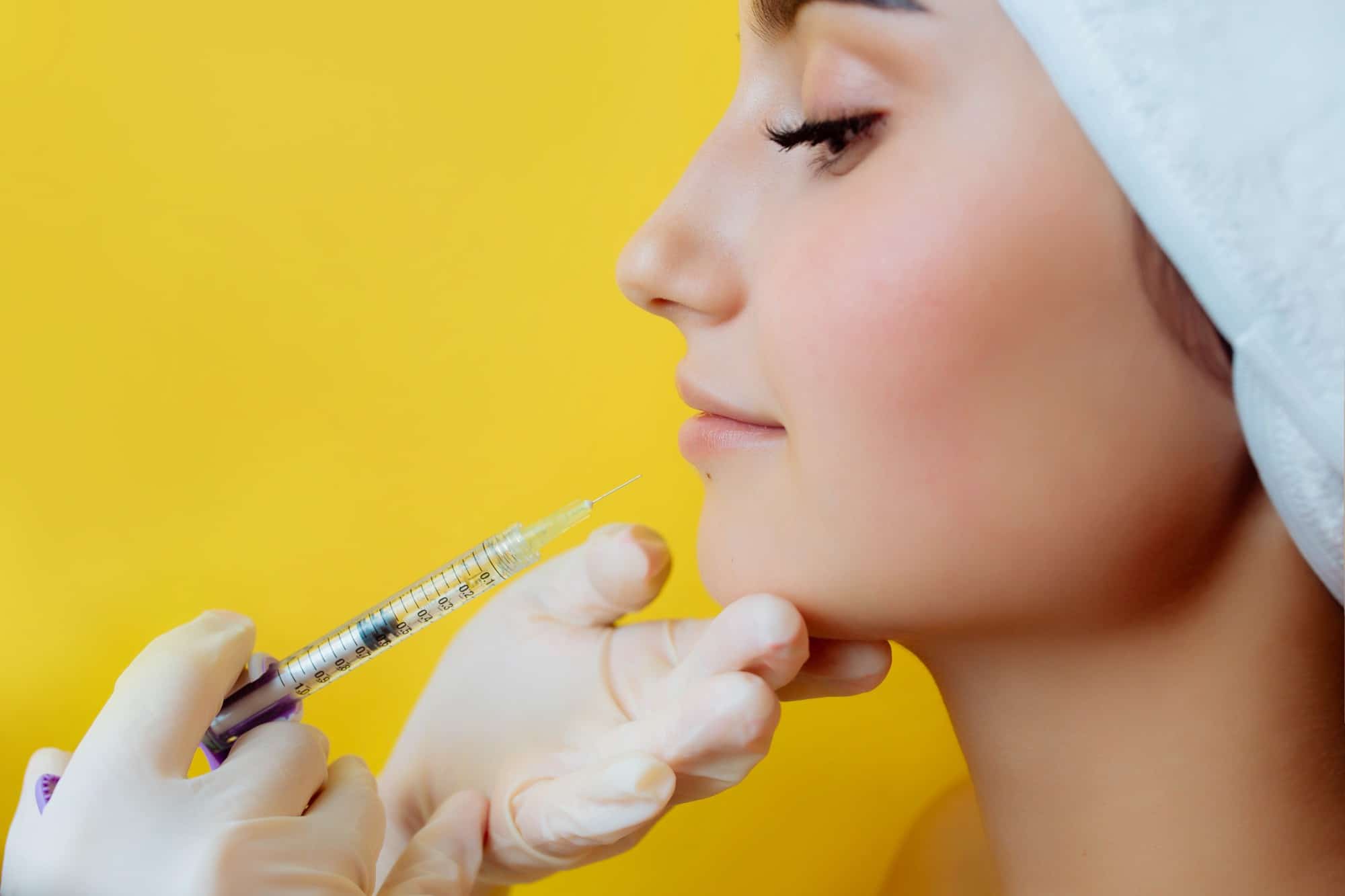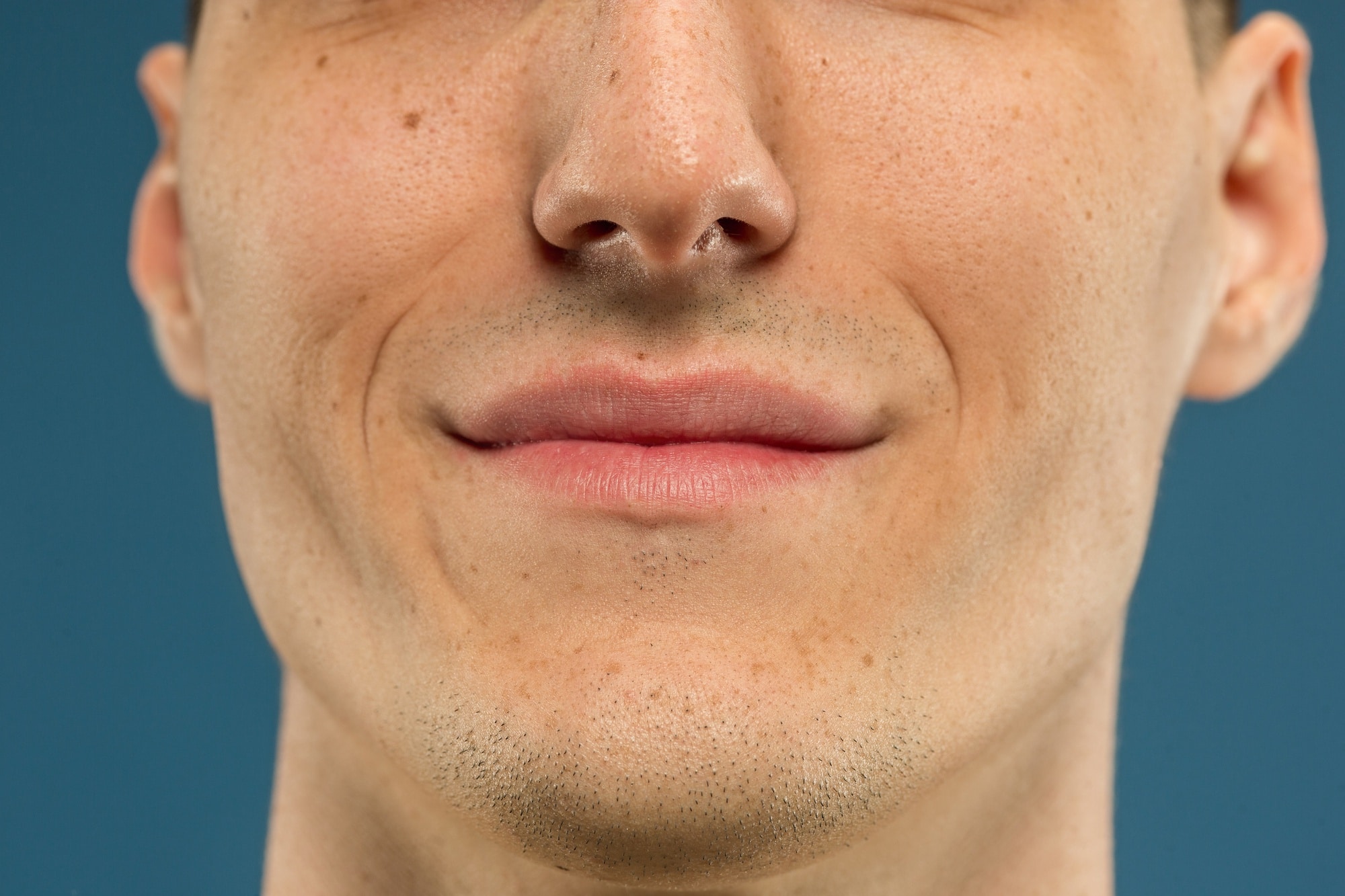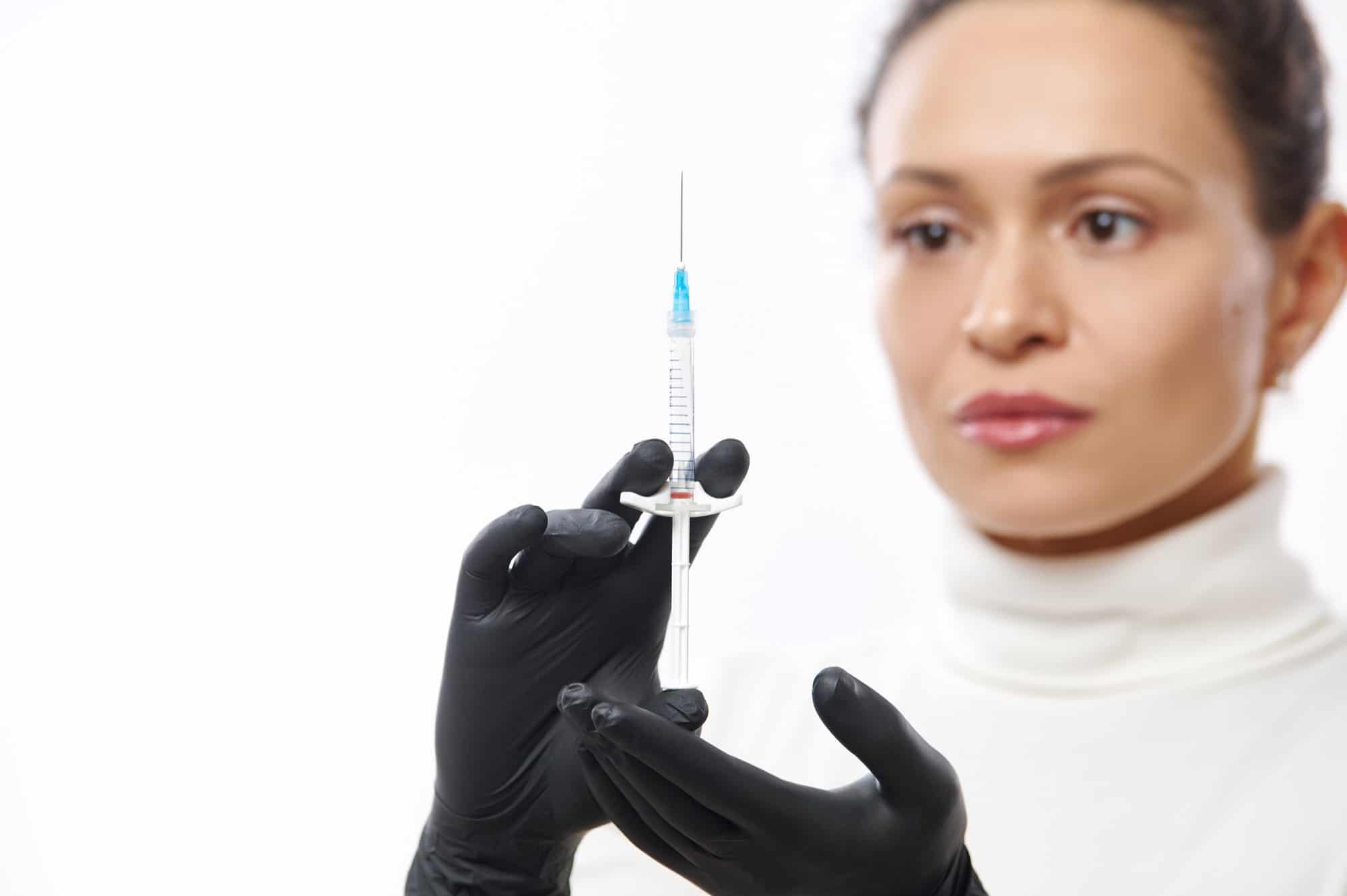
Did you know that smile lines, or nasolabial folds, are the most prominent sign of aging in a person’s lower face? According to a recent study, these unwanted creases typically appear when a person reaches their 30s but are initially subtle. Unfortunately, a person’s smile lines can deepen and contribute to a more aged appearance.
Dysport is a popular neurotoxin injection that offers a minimally invasive and effective solution for addressing signs of aging, such as nasolabial folds. When injected, Dysport targets the muscles responsible for the formation of these wrinkles. As it relaxes the muscle, Dysport treatments lead to a smoother, more youthful look.
In this article, we will explore how Dysport works to treat smile lines, including its benefits and how it compares to other neurotoxin treatments.
Key Takeaways
- Dysport is a neurotoxin treatment that can effectively address smile lines, also known as nasolabial folds, by strategically relaxing the muscles around the folds.
- Understanding the anatomy of nasolabial folds and the mechanisms by which Dysport works is crucial for achieving optimal results.
- Injection techniques, dosage considerations, and managing patient expectations are essential for successful Dysport smile line treatments.
- Dysport offers advantages such as a minimally invasive nature and longevity of results.
- Patient selection, thorough consultations, and addressing potential side effects are essential for utilizing Dysport for smile line treatments.
Understanding Nasolabial Folds and the Role of Dysport

Nasolabial folds, commonly known as smile or laugh lines, are the two skin folds that run from each side of the nose to the corners of the mouth. These folds are a natural part of facial anatomy and become more pronounced with age due to skin elasticity and volume loss.
The folds come from the underlying muscles responsible for smiling. Over time, repeated facial expressions and the natural aging process cause these muscles to become overactive and the skin above them to lose collagen, leading to the deeper set-in appearance of the folds.
How Dysport Works to Address Smile Lines
Dysport is an FDA-approved injectable treatment to smooth out wrinkles and fine lines, including nasolabial folds. It contains a neurotoxin called botulinum toxin type A, temporarily blocking nerve signals to the muscles, preventing them from contracting. This relaxation of the muscles reduces the appearance of smile lines and other facial wrinkles.
Dysport targets specific facial muscles responsible for their formation when treating nasolabial folds. By inhibiting muscle contractions, Dysport can smooth out the skin and reduce the depth of the folds. The treatment does not damage the skin or muscle but targets the underlying causes of wrinkle formation, such as repetitive facial expressions and muscle movements.
Injection Techniques for Dysport Smile Line Treatments

Strategic injection points are crucial for healthcare professionals to achieve a natural and effective result when using Dysport injections to target nasolabial folds. Doctors typically administer these injections at several points along the fold, starting from the upper part near the nose and extending down toward the corners of the mouth. However, placement varies depending on individual factors.
Considerations for Dosage and Dilution
The standard practice involves diluting the Dysport powder with a saline solution to achieve the desired concentration. The specific dosage used will depend on several factors, including:
- The severity of the nasolabial folds
- The patient’s muscle strength
- Desired outcome (subtle softening vs. significant reduction)
Proper Injection Technique for Optimal Results
The technique used during the injection process is vital for ensuring optimal results and minimizing the risk of complications. Proper technique includes the angle and depth of injection, which professionals can adjust according to the treatment area and the individual’s skin thickness.
It’s also important to inject Dysport slowly and with precision to prevent the product from spreading to unintended muscles. A skilled practitioner will be able to deliver the treatment effectively while preserving the natural movement and expression of the face.
Potential Outcomes and Patient Satisfaction
Patients considering Dysport for nasolabial folds can expect to see initial improvements within 2-3 days post-treatment, with the most noticeable changes typically appearing after 1-2 weeks. The effects of Dysport, which include the relaxation of muscles and subsequent smoothing of smile lines, are temporary and last about 3-4 months.
Patients must have realistic expectations and understand that individual factors such as skin type, severity of lines, and overall health can influence the outcomes.
Managing Patient Expectations
Effective communication about the potential results, duration of effects, and possible side effects is vital to managing patient expectations. Providers should inform their patients that while results appear within a few days, the full impact of the treatment will unfold over a couple of weeks.
Additionally, the longevity of the results can vary, and follow-up treatments may be necessary to maintain the desired appearance.
Patient Satisfaction and Retention
Patient satisfaction with Dysport is generally high. Studies show that up to 95% of patients are satisfied or highly satisfied with the treatment for nasolabial folds, and 99% would like to receive the treatment again.
The natural-looking results and the improvement in appearance contribute to a high retention rate, indicating that patients are likely to return for subsequent treatments. Practitioners must ensure that patients are well-informed about what to expect before, during, and after the treatment to maintain this level of satisfaction.
Advantages of Dysport for Smile Lines

When compared to other neurotoxin treatments for nasolabial folds, Dysport offers several advantages. Its minimally invasive nature makes it an appealing option for individuals seeking to address smile lines without surgery. Here are a few critical differences between Dysport, Botox, and Xeomin when treating nasolabial folds:
- Composition: Compared to Botox and Xeomin, Dysport contains botulinum toxin type A with additional protein buffers.
- Onset and Duration: Among the three neurotoxin injections, Dysport has a quicker onset. Its results can appear as little as 2 to 3 days after the initial treatment and last up to 4 months.
- Spread and Diffusion: Dysport also has a greater spread, making it advantageous for treating larger areas with fewer injections.
- Patient Satisfaction: Though Botox continues to be the most recognized brand, Dysport patients report high satisfaction from this injection because of the natural-looking results and the quick onset of Dysport’s action.
- Versatility: Dysport’s ability to spread slightly more than Botox and Xeomin makes it a flexible option for treating various areas of the face. Healthcare professionals can use it for other aesthetic concerns, like Dysport for bunny lines, crow’s feet, or forehead lines.
Patient Selection and Consultation Process
Selecting suitable candidates for Dysport treatments is crucial for achieving the desired outcomes. Ideal candidates are typically adults under 65 who are in good health and have dynamic wrinkles, such as smile lines, that are noticeable when making facial expressions.
Dermal fillers may be more suitable for patients with wrinkles primarily caused by volume loss. It’s also essential to ensure that candidates are not currently pregnant or nursing, as studies have not yet established the safety of Dysport during pregnancy and breastfeeding.
A comprehensive consultation is vital to understanding patient goals and setting realistic expectations. During the consultation, practitioners should evaluate the patient’s skin condition and signs of aging and discuss the potential results and timeline of Dysport treatments.
The consultation is also an opportunity for professionals to brief patients about what to expect from the procedure. They can learn about the potential side effects and benefits of Dysport. Providing this information can reduce treatment-related anxiety and encourage patients to continue with the treatment despite experiencing side effects.
Conclusion
Dysport offers a valuable tool for addressing nasolabial folds and achieving a smoother, more youthful appearance. By understanding the facial anatomy, employing strategic injection techniques, and managing patient expectations, medical professionals can leverage Dysport’s effectiveness to enhance patient satisfaction.
Dysport provides a minimally invasive approach with long-lasting results and possible touch-up treatments compared to other neurotoxins. Dysport may be the key to achieving a younger and more rejuvenated appearance for patients considering reducing their smile lines.
About: DoctorMedica is your trusted supplier of top-quality dermal fillers, viscosupplements, and more. If you’re looking to buy Dysport for your practice, the sales representatives at Doctor Medica can give you guidance.
FAQs
1. What is Dysport, and how does it work for smile lines?
Dysport is a botulinum toxin type A injectable treatment that temporarily paralyzes the muscles responsible for smile lines, reducing their appearance and formation.
2. Can my doctor use Dysport for other facial wrinkles, or is it just for smile lines?
Yes, your doctor can use Dysport to treat facial wrinkles, not just smile lines, as it can smooth out wrinkles across different facial regions.
3. How long does it take before I see results from Dysport?
Results from Dysport can typically be seen within 2-3 days after treatment, with full effects appearing after 1-2 weeks.
4. What are the common side effects of Dysport?
Common side effects of Dysport include minor bruising or swelling at the injection site, headaches, and muscle weakness.
References
Omidi P, Ravanbod R, Sarhan G, Mokhtari‐Dizaji M. The effects of a 2-W laser on the nasolabial fold of ageing individuals investigated by High-Frequency Ultrasonography: a nonrandomized controlled trial. Journal of Lasers in Medical Sciences. 2022;13:e71. doi:10.34172/jlms.2022.71
Dysport clinical study shows high patient satisfaction with two treatments per year. MedEsthetics. https://www.medestheticsmag.com/news/article/21148737/dysport-clinical-study-shows-high-patient-satisfaction-with-two-treatments-per-year. Published May 15, 2020.
Related Articles
Joanna Carr
Botox For Anal Fissure Explained
Have an interest in learning about An Explanation Of Using Botox For Anal Fissure? Browse Doctor Medica's extensive archive of blog postings.
Joanna Carr
Plinest Treatment – Everything You Need to Know
Discover the benefits of Plinest treatment, its mechanism, results, and applications for skin rejuvenation. Learn how it works and what to expect.
Joanna Carr
Is Nucleofill FDA Approved?
The FDA requires rigorous clinical trials and extensive safety data before approving any injectable treatments for use in the U.S.


